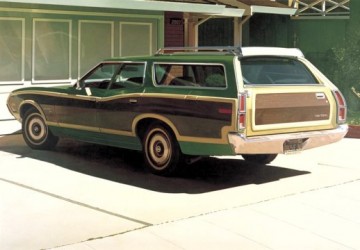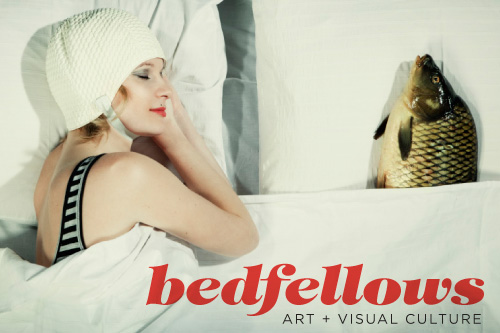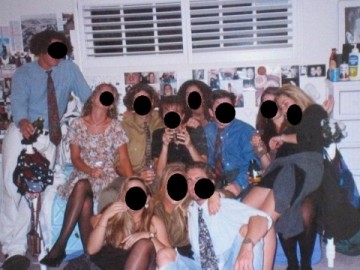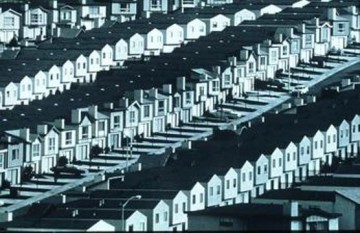We were not the same, though when we came together, we acted as one. Growing up together, seven girls in the suburbs of Northern California, we told each other’s stories and slept in each other’s beds; we shared bras and earrings and anything else that fit. We squished into the backseats of our parents’ cars, crowded the frames of group photos, and then posed identical, as so many suspected we truly were, in blue caps and gowns on a bright day in June.
Our world was three exits off Highway 24, a place with green hills in the winter and mazes of cul-de-sacs, with groomed yards and college stickers on every car in the Safeway lot. From outside, it looked like the next town over, and the one after that, like every other suburb within fifty miles of San Francisco. But from the inside, where we passed notes and met at Taco Bell every Friday night, where we laid in each other’s bedrooms on Sunday afternoons and made crank calls, it was a place defined not by the ways it resembled other places, but by how it was different, how it was ours.
Our town began like so many other suburbs: it was first a countryside retreat for wealthy city dwellers eager to escape the smells, noises, and people that accompanied the urban industrialization of the late nineteenth and early twentieth centuries. Later, in the 1950s and 1960s, it became a place for middle-class families, those not discouraged by racist housing covenants or less overt restrictions, to buy homes and lead predictable lives. In contrast to the city’s chaos, towns like ours offered standardization and uniformity.

Robert Adams. "Colorado Springs, Colorado," 1968-70. Gelatin silver print. Courtesy the J. Paul Getty Museum.
Many artists have portrayed the trademark sameness of the man-made suburban environment. While their images often suggest generic scenes, their very act of depiction—the artists’ decision to focus on that particular town or house, car or lot—individualizes the subject matter. Images like Robert Adams’s Colorado Springs, Colorado (1968–70) capture the landscape’s clean lines and serial nature. But the lone woman standing inside reminds us that even in the most sterile and controlled environments, individuals persist. She remains unknown to us, and this distance amplifies the possibilities of her experience: Is she crying inside? Lonely or sad? Is she simply wondering what to clean next? Does she know she’s being watched?

Robert Bechtle. "Alameda Gran Torino," 1974. Oil on canvas. Courtesy the San Francisco Museum of Modern Art.
In California, suburbs were developed after the advent of the automobile, and driving was built into the landscape. Though I often walked home when my parents or brother refused to pick me up, when I think back now on how I moved through the town, I remember it from inside a car: the back routes I devised to cut through traffic that took me up winding hills and through neighborhoods, the places where the road dipped or bulged unexpectedly, fading signs bent from beebee guns, dented arrows pointing onward. My friend Trevor speeding to avoid the cops in a car he got from the high school auto shop, another trying to keep the fuel tank arrow on just this side of the E. I memorized license plates of the people I had crushes on, could pick their car out of a crowded line, make out those seven numbers on a dark road at night. Photorealist painter Robert Bechtle captures the centrality of the automobile in California suburban life in images like Alameda Gran Torino (1974). Rather than perform as a vehicle for transportation, in this image the car sits before the house as a marker of identity.
No shopping area in West Coast suburbia is complete without an adjacent parking complex—paved lots with white painted lines and little shade. While these spaces in our town resembled similar lots in similar towns, to us they were wholly unique: inscribed by our patterns, holders of our rituals and secrets. It was there that we kissed and spied on our crushes and skateboarded and broke all the rules. In the pile of photographs left over from high school, I see glossy pictures of my brother’s friends drinking forties, slumped on the curb behind Taco Bell; in others they push each other in shopping carts in the grocery store lot. It was in parking lots that we listened to “Jane Says” and “In Your Eyes” on car stereos; from behind a passenger-side window I watched my ex-boyfriend kiss someone else.
When we wanted to hurt something—our parents or teachers, our exes or ourselves—we got in cars and turned on the town itself: we set out at night to destroy its physical surface, to mar its perfect and uniform facade. We threw eggs out of rolled-down windows, hit Mercedes and Volkswagens, Jaguars and Range Rovers. We screamed wild beneath overpasses, leaving behind five-bedroom homes dripping with yolk. We laughed until we peed, then we laughed because we peed, and we sat in wet underwear and jeans in the back of the car and laughed because we were not who everything thought we were. We were not perfect, and we were not the same.







